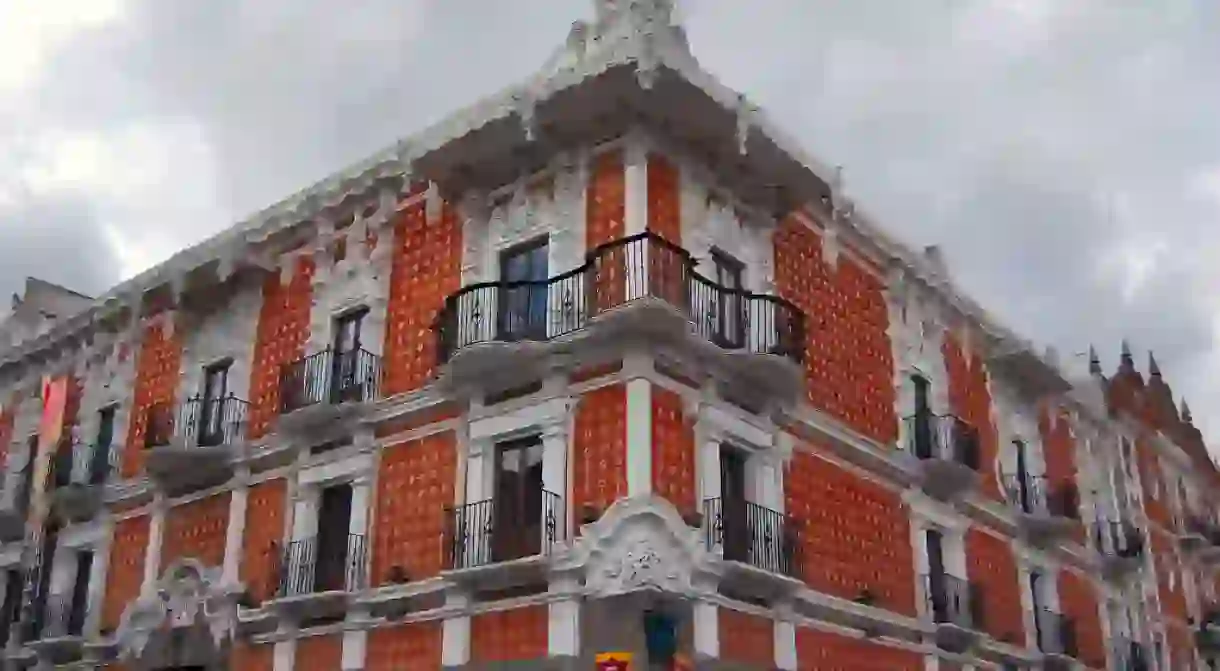The Best Museums in Puebla, Mexico

Puebla is a city dripping with history and lore. It’s a great day trip from Mexico City, and when there you can while away your time checking out museums, eating delicious regional cuisine, and staying at some of the city’s great luxury hotels. Here are some stops on the museum tour that you won’t want to miss.
Casa De Los Hermanos Serdán
Museum

The Serdán brothers, Maximo and Aquiles, as well as their sister Carmen, were vital in the Mexican Revolution movement. The Serdáns purchased arms and organized the resistance along with Francisco Madero from their home in Puebla, and that home is now a local museum. Reading Spanish is helpful here, as there isn’t much information in English, but just visiting the space itself gives you a peek into the lives of these revolutionaries, as well as their untimely deaths, fighting for what they believed in.
Biblioteca Palafoxiana
Museum

Talavera Museum
Museum

This museum is part of the Talavera Celia, one of the city’s many professional talavera pottery workshops. It’s a good way to get a fuller understanding of this important regional craft and its history. The museum displays decorative arts, as well as both traditional and avant-garde sculpture, and everyday talavera household items. Celia’s has been distinguished with a Dominion of Origin recognition, and all the work they display has been certified as created with traditional talavera techniques.
Museo de Arte Popular Poblano
Museum

Located inside the ex-Convent of Santa Rosa, the Museo de Arte Popular Poblano has examples of popular art from across Puebla, divided into these areas of the state: Huauchinango, Teziutlán, Ciudad Serdán, San Andrés Cholula, Puebla, Izúcar de Matamoros, and Tehuacán. They house over 13,000 pieces of Poblano art that run the gamut from paintings and jewelry to the personal effects of the nuns who once lived there. The convent’s kitchen and its tile work are particularly interesting for the food obsessed – this is one of the places that lays claim to having “invented” the famous mole poblano.
San Pedro Art Museum
Museum

Located inside the former San Pedro Hospital that functioned during Mexico’s viceroyalty years, the San Pedro Museum is the largest museum in the state by sheer space. Its grandiose patio, in fact, is used for outdoor concert series during Puebla’s dry season. The museum has a collection of both colonial art, including artists Miguel Jerónimo Zendejas, Vicente Manuel de Talavera, Luis Barrueco, Gaspar Conrado, and Cristóbal de Villalpando, as well as displays of antique medical instruments and tools. Much of the work there depicts how medicine was once practiced in colonial-era Mexico.
International Museum of the Baroque
Museum

This gorgeous space designed by award-winning architect Toyo Ito is home to a collection of Baroque art from throughout Puebla and the rest of Mexico. The height of Baroque during the 17th and 18th centuries was a prolific time for art in Mexico. Their collection includes the religious and the secular, high-society and everyday, and touches on all aspects of the cultural context at the time. They have a large permanent collection and rotating exhibits that touch on various aspects of art during this time period.
Regional Museum of Puebla INAH
Museum

The Regional Museum of Puebla tells the story of this important area, not just during colonial times, but to the indigenous peoples who lived on the continent long before the Spanish arrived. The museum takes you on a journey through the state’s evolution and is a great way to give the place where you stand some context. The museum is housed in the 5th of May Civic Unit, a monumental and historical complex that commemorates the Cinco de Mayo battle in Puebla.
Museo Amparo
Museum

With constantly changing and ever-fascinating temporary exhibits like a photographic series on immigration or a display of contemporary local handicrafts, the Amparo Museum also has an impressive collection of pre-colonial ceramics and artifacts as well as colonial art and furniture. It hosts international film series and art workshops for the community as well as music and concert events. This is one of the best organizations and most established museums in Puebla.
Museo Casa de Titere
Museum

The whimsical and delightful Puppet Museum houses 813 puppets from the Rosete Aranda-Espinal collection, the most important puppet collection in all of Latin America, and 630 marionettes from the Guiñol Época de Oro collection, both of which are considered vital to puppetry in Mexico. The museum also has a theater where, of course, puppet shows are held for the public. They have examples of puppet-making techniques from all over Mexico and offer guided tours. The tiniest puppeteers get in free!













